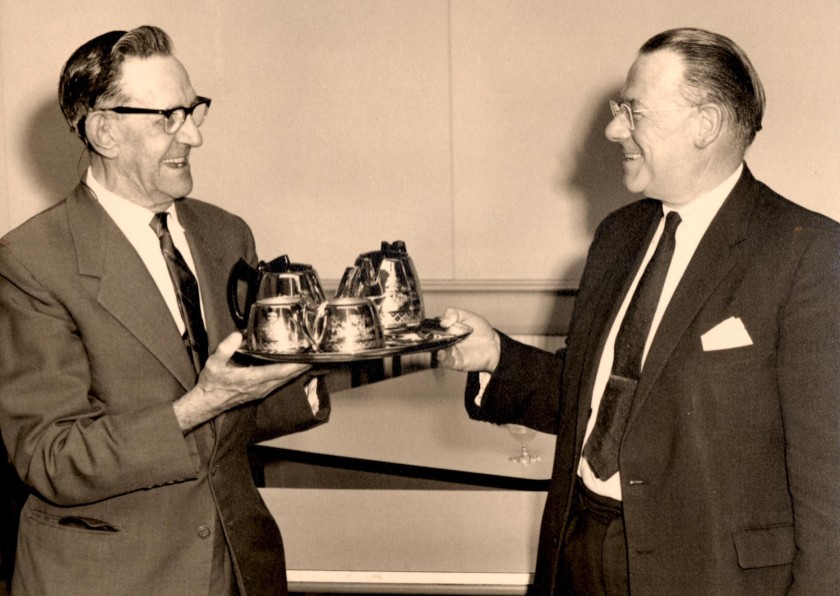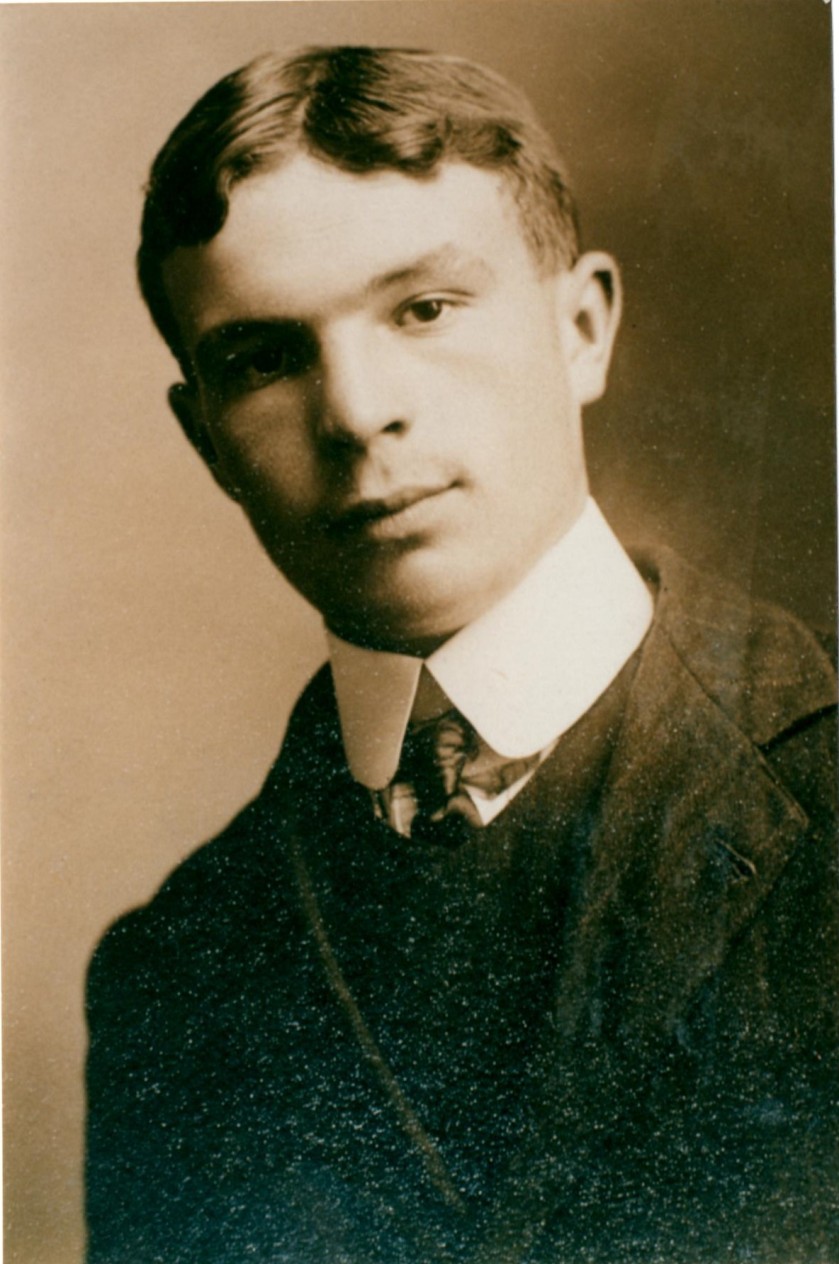John Jones was my maternal Grandfather and unlike my paternal one who I have no memories of at all, Grandad Jones is an entirely different kettle of fish. I grew up adoring my Grandad. He was a true gentleman, kind, loving and a big part of my childhood and teenage years. Here is his story along with some of my memories of him.

John was born on 21 April 1893 (this also happens to be my birthday some 60+ years later) in Much Park Street, Coventry. Due to industrialisation, by the beginning of the 19th century cities like Coventry were growing rapidly. For most of the 1800’s and into the 20th century, back to back court housing was the home to many of the cities inhabitants. These houses were cheap to build, overcrowded with very poor sanitation. Just a thin wall would divide each house. There would be a privy shared with numerous neighbours in the courtyard. These would have originally been no more than ‘earth closets’ as it would be the early 20th century before flushing toilets and mains drainage would be connected. Much Park Street would have been such a community and it was into this that John was born.
The 1901 census gives us a little bit of insight into this world. My grandfather was just 7 years old and living in one of these courts in Much Park Street. The census tells me that the family occupied three rooms. So Grandad was almost certainly sharing a bed with one if not more of his four brothers. His father William was working as a Cycle Driller and his two older brothers, William 21 years old and Henry 18, were also working in the cycle industry as a cycle fork builder and cycle brazier. The census unfortunately doesn’t tell me if the younger boys Arthur, 12, Oliver, 10, and my grandfather were at school. The brothers also had a sister Annie Selina but the last I can find of her is on the 1891 census. As yet I have found no marriage or death for her and one possible record on the 1901 census of a 20-year-old servant but nothing to prove it could be her.
The following year after this census, the boys lost their mother, Sarah Ann. She was aged just 42 and according to her death certificate died of Alcoholic Cirrhosis of the Liver, Bronchitis and Exhaustion. What had driven her to drink so heavily we can only speculate but living in such conditions certainly was a possible factor. Read her story at Sarah Ann Davis.
So at the age of just 9 my grandfather was motherless and I wonder what his early childhood had been like with an alcoholic mother. By the 1911 census all the brother’s are living in different parts of the city, however, although he is still alive, I cannot find their father. William the oldest brother, is married with three children, as is Henry, also with three children. It is with Henry, his wife and children that my grandfather is living. Henry is still employed as a Brazier in the cycle industry and John is a Bottler. Oliver I found living with and working for a carting contractor. Arthur, also a bottler by trade, was a boarder with a family called Barnacle, Frank and Esther and their seven children. It is one of their daughters Clara that my grandfather would marry in 1918.
Unfortunately I have been unable to find my grandfather’s military history for World War One. His oldest brother William was killed in France in 1916, see his story here. I have also found Arthur and Oliver’s service records but nothing for Henry or grandad.
I wonder if it was Arthur who introduced my grandparents when he was lodging with the Barnacle’s? John Jones and Clara Barnacle were married at Holy Trinity Church, Coventry on 21 December 1918. They were to have four children, three boys and their youngest child a girl is my mother.

On the 1939 register which was complied just before the outbreak of World War Two, John and Clara are living at 55 Gordon Street, Coventry. This is the house they spent the rest of their lives in and one I remember very well. A little terrace house with a cosy front room which was never used, along with the best china in a glass fronted cabinet. On the fireplace stood every one of their children’s wedding photos. One of my uncle’s sadly got divorced and Grandma, to our horror, took his wedding photo and cut my aunty out of the picture before replacing just my uncle into the frame. Mind you photos would not be taken with such regularity as they are today, so I suppose it was just the logical and cheapest thing to do. My grandparents spent their time in the back room which was dominated by a large table in the middle. Grandad had his comfy chair in front of the telly. On a winter’s day the fire would be lit. I will always remember the ticking of grandad’s clock on the wall. No one was allowed to touch that clock, he wound it up meticulously each week. Down a step and you were in a small kitchen with a pantry off. A gas cooker stood in one corner and a table in the other, either side of a fireplace. There was a sink with a wooden draining board and no hot running water. Out in the back yard was a coal house and an outside toilet. My mother tells me this was considered a luxury, your own flushing toilet. Where they had lived when she was a very young girl they shared a toilet with several of their neighbours. On the first floor there were two bedrooms. The front one was my grandparent’s. There was also an attic room.
However I digress. On the 1939 register in the house in Gordon Street was grandad who worked as a Radial Driller in the aeronautical industry, grandma who is described as an unpaid domestic servant, my three uncle’s (the oldest two also working in an aeronautical factory and the younger one at school) and my mother. I recall hearing stories as a child of my grandfather spending time in Kendal , up in Cumbria during part of the war. I know he was working for Hawker Siddeley who produced such planes as the Tornado, Typhoon and Tempest. However I can find nothing to support that they moved part of their production away from the Midlands.
Grandad saw two of his sons marry during the war years and in 1949 both my mother and her youngest brother married. That attic room in Gordon Street became home to my parents for the first five years of their marriage. When I came along in 1954 they were still there. So much of Coventry had been destroyed during the war and after it was over the city council were intent of getting the factories and infrastructure back in place. This meant no houses were being built. Luckily not long after my birth land was released for residential development and when I was 6 months old we left my grandparents for our own new home.

Grandad saw out his working life with Hawker Siddeley. I am the very proud owner of his long service clock presented to him for 25 years loyal service. The inscription inside unfortunately does not carry a date. He retired in 1963 aged 70 but did not have a long retirement.

I have many more memories of John Jones but they will have to wait for another time. Grandad died on the 16 July 1971. I was 17 years old and it was the day I broke up from school for the summer holidays. I remember arriving home and the curtains being closed as I approached the house. It was tradition then to do this on the death of a family member. I was heartbroken at the thought of never seeing my beloved grandfather again. A strange thing happened that day though. Remember that clock hanging on the wall that no one other than grandad touched, it stopped. Apparently this is not an unusual occurrence, I believe, as a clocks mechanism does get used to being wound up a certain way. However grandad had suffered a stroke several months before his death and couldn’t wind it, so my father had been given that privileged job. My father took ages getting it started again. The only way it would tick away was being on a slight angle. Eleven years later on the death of my grandmother the clock passed down to me and now has pride of place on my wall.










